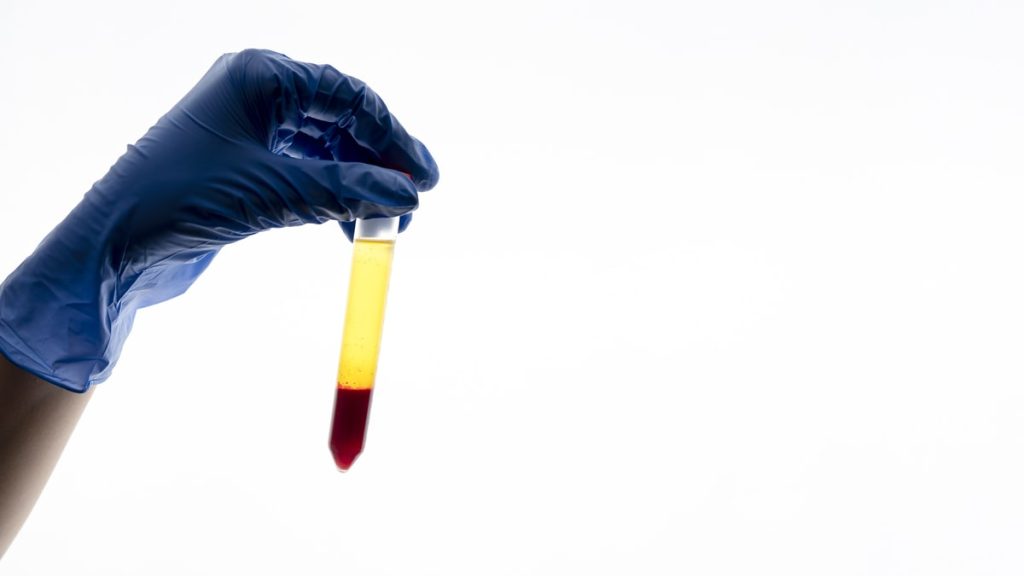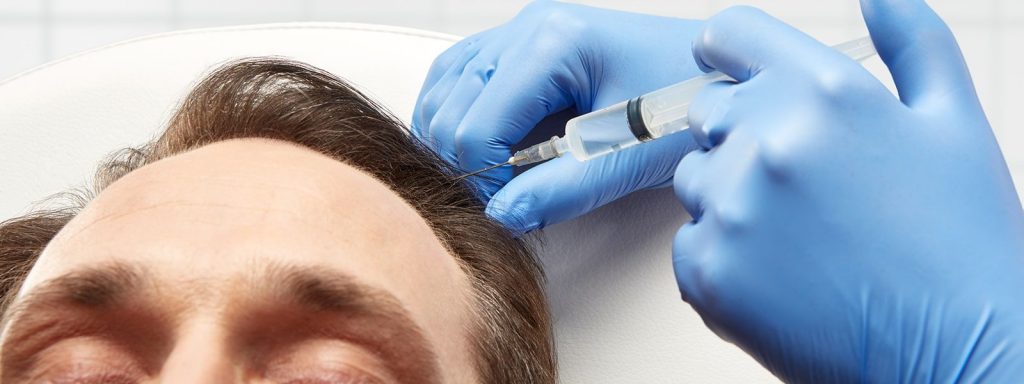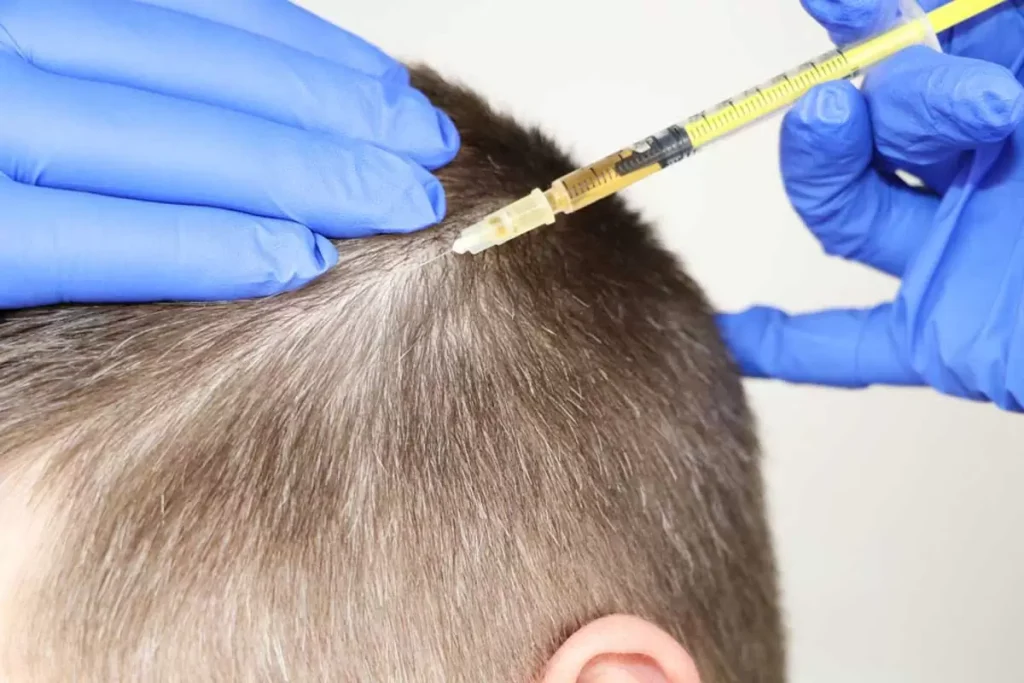PRP treatment is a popular procedure often recommended after a hair transplant. This therapy uses the patient’s own blood to stimulate hair growth and improve the overall health of the scalp. With its various benefits and minimal risk, many individuals opt for PRP treatment to enhance their results post-surgery. In this blog, we will explore the significance of PRP treatment after a hair transplant and its potential impact on the success of the procedure.
Main Points
- Explanation of PRP treatment
- Benefits of PRP treatment after a hair transplant
- The process and recovery period
- Costs and potential side effects
What exactly is PRP Hair Treatment?

PRP, or platelet rich plasma treatment, is a revolutionary therapy aimed at promoting hair growth and preventing hair loss. During the treatment, a patient’s blood is drawn and processed to extract the platelet-rich plasma, which is then injected into the scalp. The growth factors in the plasma stimulate the hair follicles, leading to increased hair growth and thickness. PRP therapy is a safe and effective option for those experiencing hair loss or thinning.
Benefits of PRP Hair Treatment:
- Promotes natural hair growth
- Prevents further hair loss
- Improves hair thickness and quality
Who Is a Candidate for PRP Hair Treatment?
PRP hair treatment is a revolutionary option for individuals struggling with hair loss or thinning hair. But who is the ideal candidate for this innovative procedure? Generally, men and women experiencing androgenic alopecia, commonly known as male or female pattern baldness, are excellent candidates for PRP hair treatment.
Candidate Criteria for PRP Hair Treatment
Below is a table outlining the criteria for individuals who are suitable candidates for PRP hair treatment:
| Candidate Criteria | Description |
|---|---|
| Age | Men and women experiencing hair loss or thinning related to aging. |
| Hair Loss Type | Individuals with androgenic alopecia (male or female pattern baldness) or temporary hair loss. |
| Overall Health | Those in good overall health with no underlying medical conditions impacting hair loss. |
It’s important to consult with a qualified healthcare professional to assess your candidacy for PRP hair treatment and determine the most suitable course of action for addressing your hair loss concerns.
How many PRP sessions are needed for hair transplant?

PRP (Platelet-Rich Plasma) therapy has become a popular treatment for hair loss and is often used in conjunction with hair transplants to promote hair growth. The number of PRP sessions needed for hair transplant can vary depending on the individual’s specific case and their response to the treatment.
Generally, it is recommended to have multiple PRP sessions, with an average of 3-4 treatments spaced 4-6 weeks apart. However, the exact number of sessions required may be determined by the severity of the hair loss, the health of the scalp, and the desired results. If you want read : Advantages of Hair Mesotherapy
The effectiveness of PRP treatment
While PRP therapy has shown promising results in stimulating hair growth and improving hair density, it’s important to keep in mind that individual results may vary. It’s also essential to consult with a qualified medical professional to determine the best treatment plan for your specific needs.
In conclusion, the number of PRP sessions needed for hair transplant can differ for each individual, and it’s crucial to follow the guidance of a medical professional to achieve optimal results.
How Does PRP Hair Treatment Work?
PRP hair treatment, or Platelet-Rich Plasma hair treatment, is a revolutionary procedure that promotes hair growth and strengthens hair follicles. The process begins with a small sample of the patient’s blood being drawn and placed in a centrifuge, where the platelet-rich plasma is separated. This plasma is then injected into the scalp, where it works to stimulate hair follicles and encourage new hair growth.
PRP contains growth factors and cytokines which play a key role in tissue regeneration and repair. These components help to nourish hair follicles, increase blood flow to the scalp, and promote the production of new, healthy hair cells.
Benefits of PRP Hair Treatment:
- Stimulates hair growth
- Strengthens hair follicles
- Improves hair thickness and density
- Reduces hair loss
Overall, the PRP hair treatment works by harnessing the body’s natural healing processes to rejuvenate the scalp and promote healthy hair growth. It is a safe and effective option for individuals looking to address hair loss and improve the overall health of their hair.
What Are the Advantages of PRP Hair Therapy?

PRP hair therapy, or platelet-rich plasma therapy, offers a multitude of advantages for individuals experiencing hair loss or thinning. One of the key benefits of PRP hair therapy is its ability to stimulate hair growth and improve hair thickness. Additionally, PRP therapy is a non-invasive procedure, making it a safer alternative to traditional hair restoration methods. Furthermore, PRP therapy uses the patient’s own blood, minimizing the risk of allergic reactions or adverse effects. Overall, the advantages of PRP hair therapy make it a promising option for those seeking effective and safe hair restoration solutions.
Frequently Asked Questions
What is PRP treatment?
PRP treatment, or platelet-rich plasma treatment, is a medical procedure that uses a concentration of a patient’s own platelets to accelerate the healing of injured tendons, ligaments, muscles, and joints.
How is PRP treatment performed?
During PRP treatment, a small amount of the patient’s blood is drawn and then spun in a centrifuge to separate the platelets from other blood components. The concentrated platelets are then injected into the injured area.
What conditions can PRP treatment help with?
PRP treatment has been used to help with various musculoskeletal conditions such as tennis elbow, Achilles tendonitis, knee osteoarthritis, and acute muscle injuries.
Is PRP treatment safe?
PRP treatment is considered safe because it uses the patient’s own blood, reducing the risk of allergic reactions or transmission of blood-borne diseases.
How long does it take to see results from PRP treatment?
The timeline for seeing results from PRP treatment varies depending on the specific condition being treated, but many patients start to experience improvement in symptoms within a few weeks to a few months after the procedure.
